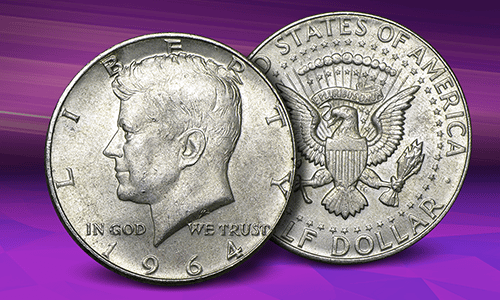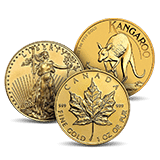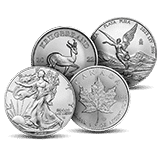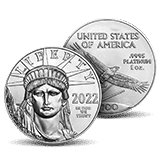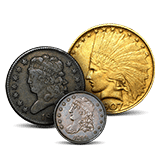Coins have been around for more than 5,000 years. Early Roman Emperors gave Silver coins that featured their likenesses to their best generals and troops as a reward for bravery. Coin collecting became popular in Europe in the 1500s. In the United States, collecting coins didn’t really begin until the 1850s but by 1950s, it was one of the most popular hobbies. Many children and parents amassed nice collections.
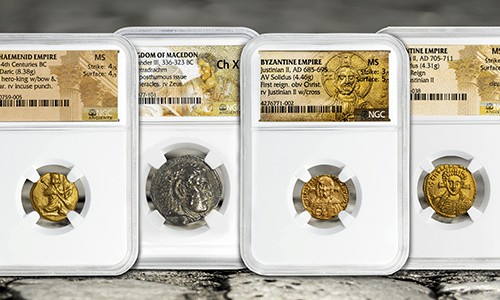
Old Coin Values
Coins always have some sort of value. They all have value equal to the face value stamped on them, but many have added collectible value, which can come from any number of factors. Some have value because they are old or scarce and are in remarkable condition. Some have value because they contain Silver or Gold or some other Precious Metal. Some coins have all of those attributes.
Factors Affecting a Coin’s Value
There are a variety of reasons one coin may have higher collector value than another. How can you determine whether the coins you have are valuable or not? Let’s discuss the factors that affect value:
- Age
- Rarity
- Condition
- Supply & Demand
- Precious Metal Content
Below, we break down each of these factors to help you better understand your coin’s value.
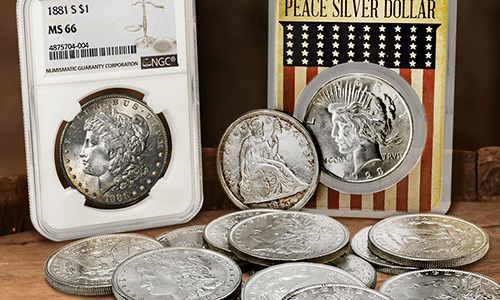
- Age is never a sole determining factor of value. For example, you might think an American Silver Dollar from the 1880s, which is more than 130 years old, would always be less valuable than a Roman Silver coin, which is well over 2,000 years old. In many instances, that is not the case. A common-date Silver Dollar with lots of detail is valued at around $40. A common Silver Roman coin in decent condition is valued at $35 even though the Roman coin is more than 15 times older than the Morgan Dollar.
- Rarity is another factor contributing to a coin’s value. How is rarity determined? Rarity looks at the date of the coin and where it was made. Many U.S. coins have what is called a Mint mark, which is a tiny letter strategically placed on the coin to tell you at which mint the coin was made. Once you know the denomination, date and Mint mark (if any) of a U.S. coin, you can start to determine the coin’s rarity. A big factor in determining rarity is to look at the number of coins that were minted for that date at that mint. The number of coins struck is called the mintage. Once all coins are struck, the supply is fixed and no more of that date and Mint mark will ever be produced. Mintages for U.S. coins can be obtained in the Guide Book of United States Coins, also called the “Red Book.” For Silver and Gold coins, the mintage numbers may no longer be accurate if the coin was in existence during 1979-1980 or 2008-2012, as those were years when Gold and Silver prices were very high and many coins were melted simply for their bullion value. The surviving mintages of those coins could be a tiny fraction of the original mintage.
- Condition is another factor in determining the value of a coin. Coins are graded on a scale from 1 to 70, with 1 being Barely Identifiable and 70 being absolutely perfect. This scale is known as the Sheldon Grading Scale, named for Dr. William Sheldon who invented it in 1949 as a way to grade Large Cents. The closer a coin is to perfection, the higher it will grade on this scale. The non-sequential numbers between 1 and 58 are reserved for coins that have some actual and visible wear (a little bit to a great deal) on the details of the coin. The higher numbers, 60 through 70, are reserved for coins without wear, but these coins may have a few to many marks on them.
- Supply and Demand are often more important than the actual age of a coin. If there is a greater supply than there is demand for the coin, the price will drop or stay low. If the supply is inadequate to meet the demand then prices rise until the demand slows. This is Economics 101, but it does play a significant role in the valuation of a coin. The supply can be somewhat determined by mintages and the published certified population numbers, if applicable. Demand is gauged by the number of “Buy” messages on the trading networks for these items, how quickly these coins sell out of dealers’ inventories and, for more expensive coins, prices obtained at auction. Supply and demand can be a regional anomaly too. For example, U.S. Large Cent coins can be in great supply to East Coast coin dealers but in short supply in the rest of the country, so that is a variable that must also be considered.
- Precious Metal Content is yet another factor in determining the value of a coin. Some coins have Precious Metals as part of their metallurgical makeup and some do not. If a coin does have some Precious Metal content, the coin is always worth the value of the metal, at a minimum. This is called the coin’s intrinsic value. Numismatic coins made of Gold, Silver, Platinum or Palladium have the Precious Metal intrinsic value as well as added numismatic or collectible value.
The Sheldon Grading Scale
| Grading Abbreviation | Description | Grades |
|---|---|---|
| MS | Mint State | 60-70, sequentially |
| AU | About Uncirculated | 50, 53, 55, 58 |
| XF | Extremely Fine | 40, 45 |
| VF | Very Fine | 20, 25, 30, 35 |
| F | Fine | 12, 15 |
| VG | Very Good | 8, 10 |
| G | Good | 4, 6 |
| AG | About Good | 3 |
| FA | Fair | 2 |
| PR | Poor | 1 |
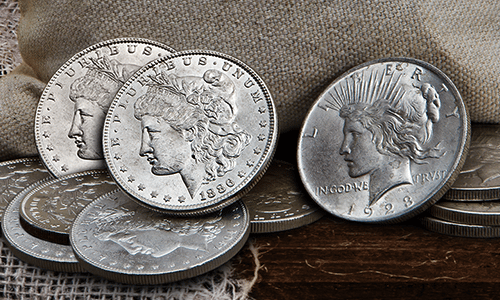
The Elimination of Silver from our Coinage
Silver U.S. coins have been minted since 1794. The U.S. Silver coins vary from 3 Cent Silvers to half dimes, dimes, quarters, half dollars and dollars. All of these coins have varying amounts of 90% Silver. The earliest varieties of Silver coins beginning in 1794 have a Silver fineness of .8924. This was upgraded to .900 Fine in 1837 and that remained unchanged until 1965. Starting in 1959, there were significant coin shortages across the United States. The 1960s saw an unprecedented increase in the industrial use of Silver.
This put significant pressure on the price of Silver, which was capped at $1.29 per ounce by U.S. government sales. The Silver content in a dollar’s worth of coins was suddenly worth more as Silver bullion than as actual coinage. The price of Silver coinage increased to $1.40 per $1 face value of 90% Silver coins. As the public realized this, there was widespread hoarding of Silver coins. The price of Silver had risen and was exceeded by its melt value. At that point the Treasury decided they would no longer make Silver Dimes or Quarters. The Half Dollar coins would continue to have Silver but instead of a 90% Silver content, it was reduced to 40%.The clad coinage era had begun.
Silver Half Dollars
The Coinage Act of 1965 eliminated Silver from circulating coinage as described above. The 40% Silver in the half dollar was subsequently eliminated by a 1970 coinage law. Also placing pressure on Silver coinage was the demand for the 1964 Kennedy Half Dollar, honoring the recently martyred president. As coins were released they were pulled from circulation. 90% Silver coins circulated with their new clad counterparts until all Silver coins had been withdrawn.
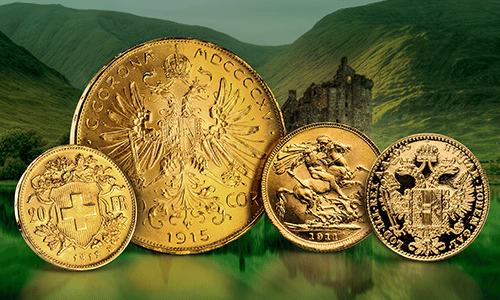
Gold in our Coinage
Gold has served as a form of currency throughout recorded history. With the discovery and settling of America, many foreign Gold coins served as currency for the as-yet-unborn country. Gold coins from Great Britain, the Netherlands, Germany, France and Spain dominated the U.S. economy. These foreign Gold (and Silver) coins were legal tender in the United States until 1857. United States Gold coins were struck from 1795 to 1933, the year the Gold Standard was abandoned by President Franklin Roosevelt. That is why U.S. Gold coins from this time are referred to as Pre-33 Gold coins.
Changing Gold Content
When first struck in 1795, Gold coins were composed of .9167 fine Gold and a .0833 Silver and Copper mix. In the late 1830s the mix was changed to .900 fine Gold, depending on the issue. Some coins had small minor variations, but it is safe to say from the late 1830s to 1933 all U.S. Gold coins were comprised of .900 fine Gold and .100 Copper. No one knows how many Pre-33 U.S. Gold coins were melted during 1979-1980 and 2008-2012, as the spot price of Gold and Silver reached historic new highs during those periods.
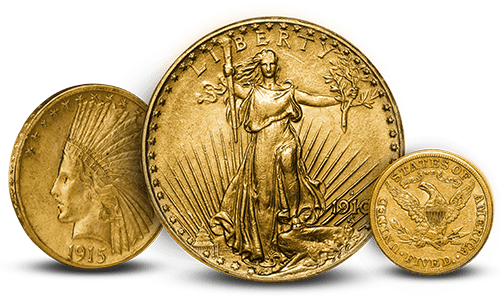
Major U.S. Coin Types
Here is a table of the major types of U.S. coins, along with an estimate of their value at two different conditions. This table is for informational purposes only and should not be used as a guide when looking to buy or sell any U.S. coins.
Half Cents
Called the “Little Sisters” by early U.S. collectors, the Half Cent series is widely collected and an important denomination of early U.S. coinage. Though considered an unusual and insignificant denomination today, the Half Cent was important during the day when working wages were $1 per 10-hour day. They are the smallest denomination of coins ever minted by the U.S. Mint.
| Coin Type | Average Circulated | Typical Uncirculated |
|---|---|---|
| Half Cent – Liberty Cap – 1793-1797 | $500 – $10,000 | Rare |
| Half Cent – Draped Bust – 1800-1808 | $20 – $500 | Rare |
| Half Cent – Classic Head – 1809-1836 | $20 – $100 | $300 – $600 |
| Half Cent – Coronet Type – 1840-1857 | $30 – $100 | $150 – $300 |
Large Cents
Large Cents are very widely collected in America. They are the link to our Founding Fathers and represent a beautiful series of coins. An important issue is the 1793 Large Cent, one of the first coins struck by the U.S. Mint. This coin comes in three types: the “Chain” Cent, the “Wreath” Cent and the “Liberty Cap” design. Large Cents were minted between 1793 and 1857.
| Coin Type | Average Circulated | Typical Uncirculated |
|---|---|---|
| Large Cent – Flowing Hair Chain – 1793 | $5,000 – $30,000 | Rare |
| Large Cent – Flowing Hair Wreath – 1793 | $1,000 – $5,000 | Rare |
| Large Cent – Liberty Cap – 1793-1796 | $200 – $1,000 | Rare |
| Large Cent – Draped Bust – 1796-1807 | $100 – $500 | Rare |
| Large Cent – Classic Head – 1808-1814 | $100 – $500 | Rare |
| Large Cent – Matron Head – 1816-1835 | $5 – $100 | $200 – $2,000 |
| Large Cent – Braided Hair – 1839-1857 | $5 – $100 | $100 – $300 |
Small Cents
The first small cent to be struck for circulation was the 1856 Flying Eagle cent. The Flying Eagle cent didn’t last long as a design, but it will forever hold the distinction as the first small cent produced in the United States. In 1859, the small penny began a 50-year journey with the Indian Head cent, which has grown to enjoy a near-legendary status in American lore. Finally, the Lincoln Cent was first produced in 1909 and still stands as the longest running obverse design in United States coinage history.
| Coin Type | Average Circulated | Typical Uncirculated |
|---|---|---|
| Small Cent – Flying Eagle – 1856 | $3,000 – $5,000 | $6,000 – $8,000 |
| Small Cent – Flying Eagle – 1857-1858 | $10 – $50 | $100 -$200 |
| Indian Head Cent – 1859-1909 | $0.25 – $10 | $15 – $30 |
| Lincoln Cent – 1909-Present | Face value – $10 | Face value – $50 |
| Lincoln Cent – Steel w/ zinc plating – 1943 | Face value – $0.05 | $1 – $3 |
| Lincoln Cent – Copper – 1943 | $20,000 – $50,000 | $80,000 – $110,000 |
Two-Cent Pieces
Issued in 1864, the 2 Cent Piece has the distinction of being the first coin to bear the inscription “In God We Trust.” One of the most interesting coins in this series is the 1864 issue. There are both Small and Large Motto varieties. The Small Motto is significantly rarer than the Large Motto variety, being worth more than 10 times the price of the Large Motto.
| Coin Type | Average Circulated | Typical Uncirculated |
|---|---|---|
| Two-Cent Pieces – 1864-1873 | $8 – $25 | $80 – $100 |
Three-Cent Pieces
Proposed in response to the decrease in postage rates from five to three cents, three-cent Silver pieces are the lightest-weight coins ever minted by the United States. Before the Three Cent Nickel release in 1865, it was believed that coins had to be worth as much as their Precious Metal content. The Three Cent Nickel helped the population see otherwise. This helped to alleviate the need for small change as Silver shortages led to widespread hoarding of all Silver coins.
| Coin Type | Average Circulated | Typical Uncirculated |
|---|---|---|
| Three-Cent Silver – 1851-1873 | $10 -$20 | $100 – $450 |
| Three-Cent Nickel – 1865-1889 | $5 – $20 | $75 – $100 |
Nickels
Nickels have become one of the staples of American coinage. They were introduced after the Civil War, which made them an important part of the exchange. The first iteration of the nickel, the Shield Nickel was widely popular, followed by the Buffalo Nickel and Jefferson Nickels. These nickels, plus more, can give you a glimpse into our American heritage.
| Coin Type | Average Circulated | Typical Uncirculated |
|---|---|---|
| Five Cent Nickel – Shield Type – 1866-1883 | $10 – $30 | $75 – $150 |
| Five Cent Nickel – V Nickel – 1883-1912 | $0.15 – $15 | $40 – $100 |
| Five Cent Nickel – Buffalo Type – 1913-1938 | $0.15 – $15 | $20 – $100 |
| Five Cent Nickel – Jefferson Type – 1938-Present | Face value | Face value |
| Five Cent Nickel – War Time Alloy – 1942-1945 | $0.50 – $1 | $5 – $10 |
Half Dimes
Before the nickel five cent coin’s introduction in 1866, the five-cent denomination was known as the half dime. The half dime was one of the original denominations introduced when the U.S. coinage system began in 1792. There are a variety of designs and types of Half Dimes available, making them fun to search for and collect.
| Coin Type | Average Circulated | Typical Uncirculated |
|---|---|---|
| Half Dime – Flowing Hair Type – 1794-1795 | $500 – $2,500 | $5,000 – $8,000 |
| Half Dime – Draped Bust – 1796-1805 | $750 – $3,000 | $7,000 – $20,000 |
| Half Dime – Capped Bust – 1829-1837 | $15 -$100 | $200 – $300 |
| Half Dime – Liberty Seated – 1837-1873 | $10 – $50 | $150 – $300 |
Dimes
Beginning with the Draped Bust design of 1796, there have been numerous varieties of United States dime designs. Following the Draped Bust were the Capped Bust, Liberty Seated, Barber, Mercury and Roosevelt designs. Each design has its own unique beauty and numerous varieties.
| Coin Type | Average Circulated | Typical Uncirculated |
|---|---|---|
| Dime – Draped Bust (Small Eagle) – 1796-1837 | $1,000 – $2,500 | $6,000 – $9,000 |
| Dime – Capped Bust – 1811-1837 | $25 – $350 | $500 – $3,500 |
| Dime – Liberty Seated – 1837-1891 | $5 – $250 | $100 – $350 |
| Dime – Liberty Head (Barber) – 1892-1916 | $1 – $60 | $80 – $400 |
| Dime – Winged Liberty (Mercury) – 1916-1945 | $1 – $10 | $5 – $40 |
| Dime – Roosevelt (Silver) – 1946-1964 | $1 – $1.75 | $2 |
| Dime – Roosevelt (Clad) – 1965-Present | Face value | Face value |
Twenty-Cent Pieces
For a very brief period, this unusual denomination found its way into the American coin catalog. The U.S. Mint released the 20 cent coin in 1875, but canceled it by 1878, making it the shortest-lived of all types of circulating U.S. coins. Consumers initially found the coins to be inconvenient and too easily confused with the quarter dollar coins, but today, U.S. 20 cent pieces are highly sought after by collectors.
| Coin Type | Average Circulated | Typical Uncirculated |
|---|---|---|
Twenty-Cent Piece – 1875-1878 | $65 – $100 | $400 – $600 |
Quarters
Beginning with the Draped Bust design of 1796, there have been numerous varieties of United States quarter designs. Following the Draped Bust design were the Capped Bust, Liberty Seated, Barber, Standing Liberty and Washington designs. Each has its own unique beauty and place in American history. Quarters make great additions to any numismatic collection because of the beautiful designs and their special places in numismatic history.
| Coin Type | Average Circulated | Typical Uncirculated |
|---|---|---|
| Quarter – Draped Bust – 1796-1807 | $4,000 – $15,000 | $20,000 – $25,000 |
| Quarter – Capped Bust – 1815-1838 | $65 – $100 | $750 – $1,800 |
| Quarter – Liberty Seated – 1838-1891 | $15 – $90 | $350 – $1,000 |
| Quarter – Barber 1892 – 1916 | $2.50 – $50 | $100 – $500 |
| Quarter – Standing Liberty – 1916 | $2,000 – $3,000 | $4,500 – $5,000 |
| Quarter – Standing Liberty – 1917-1930 | $2.50 – $50 | $100 – $150 |
| Quarter – Washington (Silver) – 1932-1964 | $2.50 – $25 | $5 – $100 |
| Quarter – Washington (Cupro-Nickel) – 1965-Present | Face value | Face value |
| Quarter – Bicentennial – 1776-1976 | Face value | Face value |
Half Dollars
United States Half Dollars have a long history and tradition that few other coins can imitate. Their place amongst the current monetary system is not as prevalent as in day’s past. A number of reasons correspond to its decline in circulation, but the most powerful factor was the death of President John F. Kennedy in 1963. After that tragedy, people hoarded their half dollars as a keepsake to honor the late commander in chief.
| Coin Type | Average Circulated | Typical Uncirculated |
|---|---|---|
| Half Dollar – Flowing Hair – 1794-1795 | $2,000 – $4,000 | Rare |
| Half Dollar – Draped Bust – 1796-1807 | $10,000 – $30,000 | Rare |
| Half Dollar – Capped Bust – 1807-1836 | $30 – $85 | $500 – $700 |
| Half Dollar – Reeded Edge – 1836-1839 | $35 – $10 | $600 – $800 |
| Half Dollar – Liberty Seated – 1839-1891 | $20 – $200 | $300 – $500 |
| Half Dollar – Barber – 1892-1915 | $7 – $100 | $300 – $600 |
| Half Dollar – Liberty Walking – 1916-1947 | $5 – $12 | $15 – $20 |
| Half Dollar – Franklin – 1948-1963 | $5 – $8.50 | $5.50 – $20 |
| Half Dollar – Kennedy – 1964 | $5 | $5 |
| Half Dollar – Kennedy (40% Silver) – 1965-1969 | $1.50 | $1.50 |
| Half Dollar – Kennedy – 1970-D | $1.50 | $3 |
| Half Dollar – Bicentennial – 1776-1976 | Face value | Face value |
| Half Dollar – Kennedy – 1971-Present | Face value | Face value |
Dollars
Silver Dollar coins are the most popular general circulation Silver coins produced by the U.S. Mint. They are eagerly sought after for their important value in their historical regard, their Silver content, and their face value as currency. Released in 1794, the first Silver Dollar coin featured the Flowing Hair design created by Robert Scot. The most popular of all Silver dollars is the Morgan Silver Dollar which is considered the most important and most widely collected Silver coin in U.S. history. Silver dollars are a favorite collector’s item because of their size, beauty, and availability.
| Coin Type | Average Circulated | Typical Uncirculated |
|---|---|---|
| Dollar – Flowing Hair – 1794-1795 | $1,000 – $25,000 | Rare |
| Dollar – Draped Bust (Small Eagle) – 1795-1798 | $500 – $1,500 | $15,000 – $20,000 |
| Dollar – Heraldic Eagle – 1798-1803 | $500 – $1,000 | $6,000 – $8,000 |
| Dollar – Heraldic Eagle – 1804 | N/A | $3,000,000 |
| Dollar – Gobrecht – 1836-1839 | $3,000 – $5,000 | $8,000 – $10,000 |
| Dollar – Liberty Seated – 1840-1873 | $150 – $500 | $1,000 – $1,500 |
| Dollar – Trade – 1873-1885 | $50 – $300 | $400 – $1,000 |
| Dollar – Morgan – 1878-1921 | $15 – $20 | $24 – $70 |
| Dollar – Peace – 1921-1935 | $15 – $19 | $20 – $50 |
| Dollar – Eisenhower – 1971-1978 | Face value | $1.25 – $2 |
| Dollar – Susan B. Anthony – 1979-1981,1999 | Face value | Face value |
| Dollar – Sacagawea – 2000-Present | Face value | Face value |
| Dollar – Presidential – 2007-2016 | Face value | Face value |
$1 Gold
Produced from 1849 to 1889, $1 Liberty Head Gold Coins are the smallest denomination of Gold coinage ever produced by the U.S. Mint. Throughout its minting, the $1 Gold coin was produced in three types, but each were similar to each other. Type 1 coins are 13 mm across while Type 2 coins are slightly larger at 15 mm across. Type 3 coins, also 15 mm across, are the most common of all Gold dollars, but they are scarce today.
| Coin Type | Average Circulated | Typical Uncirculated |
|---|---|---|
| $1 Gold – Type 1 – 1849-1854 | $120 – $200 | $350 – $700 |
| $1 Gold – Type 2 – 1854-1856 | $300 – $475 | $500 – $1,000 |
| $1 Gold – Type 3 – 1856-1889 | $140 – $225 | $380 – $725 |
$2.50 Gold Quarter Eagles
These smaller denomination Gold coins circulated widely throughout the United States. Their age, historical value and limited production make the $2.50 Gold Quarter Eagles a desirable addition to any investment portfolio or numismatic collection.
| Coin Type | Average Circulated | Typical Uncirculated |
|---|---|---|
| $2.50 Gold – Turban Head – 1796-1807 | $8,000 – $25,000 | $85,000 – $100,000 |
| $2.50 Gold – Capped Bust – 1808-1834 | $3,000 – $4,000 | $30,000 – $40,000 |
| $2.50 Gold – Classic Head – 1834-1839 | $275 – $350 | $1,000 – $1,800 |
| $2.50 Gold – Liberty Head – 1840-1907 | $235 – $260 | $330 – $350 |
| $2.50 Gold – Indian – 1908-1929 | $220 – $250 | $275 – $300 |
$3 Gold
The $3 Gold Indian Head Princess coins are esteemed as one of the more unusual U.S. coins because of their unusual denomination and short production runs, low mintages, and unique design. This coin was created by James Longacre to separate the new coin from the two other Gold coins of similar size, the $2.50 Gold Liberty Quarter Eagle and the $5.00 Gold Liberty Half Eagle.
| Coin Type | Average Circulated | Typical Uncirculated |
|---|---|---|
| $3 Gold – 1854-1889 | $600 – $850 | $1,750 – $3,500 |
$4 Gold
Called Stella after the Latin word for star, these very scarce and unusual coins have a five-pointed star depicted on the reverse. These $4 U.S. Gold coins are extremely rare (only 460 are in the original mintage) and in high demand as one of America’s first numismatic works of art. These Stella $4 Gold coins make interesting pieces in any collection with such low original minting numbers.
| Coin Type | Average Circulated | Typical Uncirculated |
|---|---|---|
| $4 Gold – 1879-1880 | $30,000 -$50,000 | $100,000 – $200,000 |
$5 Gold Half Eagles
These smaller denomination Gold coins circulated widely throughout the United States, and were minted and distributed as coinage before President Franklin Roosevelt required Americans to turn in their Gold coins in 1933. Those coins turned in were melted into bars to help combat the economic pressures of the Great Depression. The recall of these Gold coins from circulation made these coins that were previously very common, now very scarce.
| Coin Type | Average Circulated | Typical Uncirculated |
|---|---|---|
| $5 Gold – Turban Head – 1795-1807 | $5,000 – $8,000 | $25,000 – $30,000 |
| $5 Gold – Capped Bust – 1807-1834 | $1,000 – $2,000 | $4,000 – $4,500 |
| $5 Gold – Classic Head – 1834-1838 | $475 – $550 | $1,500 – $2,300 |
| $5 Gold – Liberty Head – 1839-1908 | $300 – $365 | $370 – $400 |
| $5 Gold – Indian Head – 1908 -1929 | $325 – $380 | $390 – $430 |
$10 Gold Eagles
Ever since their first minting, the largest original denomination and the convenient size of the $10 Gold Eagle coins made them an instant success and one of the country’s most circulated and most valued gold coins. With their historical significance, many consider these Gold coins to have a higher value than most modern 1/2 oz Gold coins.
| Coin Type | Average Circulated | Typical Uncirculated |
|---|---|---|
| $10 Gold – Turban Head – 1795-1804 | $5,000 – $12,000 | $25,000 – $35,000 |
| $10 Gold – Liberty Head – 1838-1907 | $580 – $615 | $640 – $665 |
| $10 Gold – Indian Head – 1907-1933 | $625 – $650 | $680 – $710 |
$20 Gold Double Eagles
The Coinage Act of 1849, prompted by enormous Gold finds in California, pushed Congress to authorize the mintage of the $20 Gold Double Eagle coin, which contain the highest Gold content of any regularly issued vintage U.S. Gold coin. The original Liberty design was minted for more than 50 years, but it was then followed by the truly artistic Saint-Gaudens design. Many collectors consider the Saint-Gaudens Double Eagle one of, if not the most beautiful coin the U.S. Mint has ever released.
| Coin Type | Average Circulated | Typical Uncirculated |
|---|---|---|
| $20 Gold – Liberty – 1850-1907 | $1,215 – $1350 | $1,400 – $1,675 |
| $20 Gold – Saint-Gaudens – 1907-1933 | $1,225 – $1,400 | $1,500 – $1,950 |

